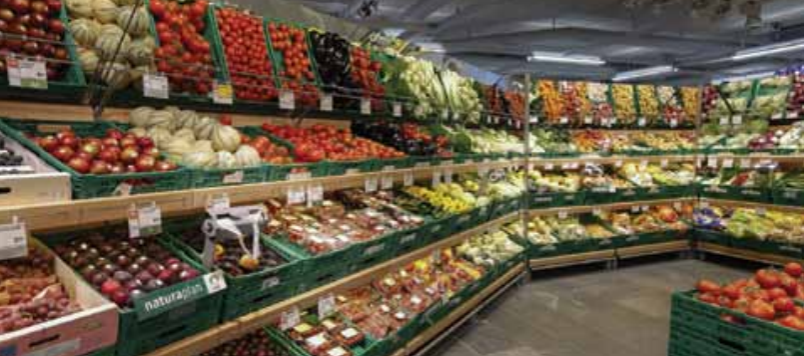Steady rise in fruit & veg imports in Nordic markets
Over the last 3 years, volumes have increased by 8% for vegetables and 5% for fruit.
Sweden and Norway are the top importers for both the fruit and vegetable categories.
Norway – €1.45 billion import market
In 2015, Norway imported 446,212 tons of vegetables with a value of €548.8 million and 543,311 tons of fresh fruit worth €904.7 million.
Norway is Scandinavia’s second biggest importer after Sweden and the steady growth in its fresh produce imports reached a peak last year. The most valuable fresh vegetable imports into Norway are tomatoes, worth €107.7 million, followed by cauliflower and cabbages at €54.8 million.
Most fresh vegetables in Norway come from Spain. In fruit, Norway is a big importer of citrus (129,628 tons) and apples and pears (111,038 tons). In 2015, 60% of Norway’s apples came from Italy.
In contrast to Sweden, supplied by the Netherlands, Norway imports more from Spain, with a total value of €92.9 million in 2014 and €116.9 million for fresh fruits. Dutch imports reached €74.94 million.
The number one partner in Scandinavia is Denmark, with €9.7 million of fresh produce traded.
Sweden – the leading Nordic fresh produce market
In 2015, Sweden imported 768,832 tons of fruit for a total value of €1.03 billion and 522,103 tons of fresh vegetables for a total value of €627.37 million.
Imports from European countries increased by 13.5% for vegetables and 18% for fruits on average. In 2015, Germany was the main supplier (€236.62 million), followed by Spain (€163.58 million).
The most popular imported vegetables in Sweden are tomatoes, with 89,135 tons, and potatoes, with 52,846 tons. Carrot volumes saw the most important rise (24%).
In the fruit category, citrus (144,751 tons), and apples and pears (112,439 tons) were the most traded with Sweden. Both represent almost 50% of the total volume of fruit imports. In 2015, the import trend is more focused on melons (+13%), bananas (+12%), apples and pears (+11%) and berries (+10%), while grapes decreased by 17%.
Denmark – sourcing more in the EU
In 2015, Denmark imported 440,498 tons of fruit for a total value of €657.8 million and 384,697 tons of fresh vegetables for a total value of nearly €357.6 million. Imports from European countries increased by 10% in volume, in contrast to imports from outside the EU, which dropped by 33%.
The most popular imported vegetables in Denmark are potatoes (€1.2 million in 2015), accounting for a third of the country’s total vegetable imports.
Denmark has supplied more tomatoes (+8%), cabbages (+8%), lettuce (+4%) and carrots (+13%).
Citrus is the top fruit import and import volumes have remained stable over the last 3 years (82, 529 tons in 2015). While banana import volumes fell by 9%, exotics and melons rose by 15% and 22% respectively from 2013 to 2015.
Finland – addicted to fruit
Finnish imports of fresh produce are the lowest among Scandinavian countries. In 2015, Finland imported 339,060 tons of fruit for a total value of €432.5 million and 180,092 tons of vegetables for a total value of €241.16 million.
Some 96% of fresh produce imports come from European countries, although Finland is increasingly sourcing further afield for its exotics and bananas. In 2015, import values reached roughly €27.9 million from Germany, €72 million from Spain and €90.5 million from the Netherlands.
In 2015, Sweden was the top supplier for Finland (€17.3 million). Vegetable imports have fallen 4.5% over the last 3 years, while Finland has been sourcing more and more fruit, especially exotics: banana (+189%), dates, figs (+177%) and coconut (+21%).
In vegetables, potato imports have suffered considerably, with a fall of 46%, while onions and carrots dropped by 11% and 3% respectively.



